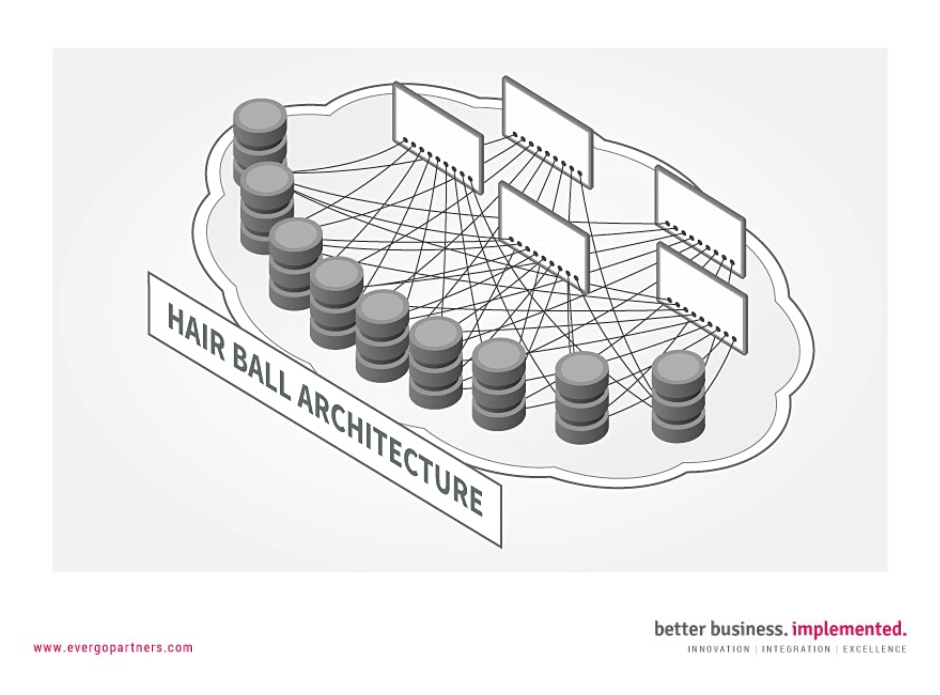Introduction
21 century introduced all companies to a globally digitized economy. Yet, so few companies benefit from the value of Service Oriented Architecture (SOA) in their enterprise. In fast pace, digitized economy inaccurate Enterprise Architecture (EA) creates business roadblocks that contribute to inefficiency and waste. Jeanne Ross of MIT suggests that EA is no longer an option but a must have for global company’s survival. EA needs to become elevated from within IT silos and re-introduced around business service strategy that is at the core of company’s mission.

Enterprise Architecture Best Practices
Oliver Bossert and Jürgen Laartz of McKinesy & Co. in their article “10 practical ideas for organizing and managing your enterprise architecture” suggest to focus on the following:
- The organization of enterprise architecture should reflect the organization of the business;
- The company should be clear about who is accountable for EA decisions;
- The EA department should collaborate closely with the business and the IT organization;
- The EA department should keep strategy-related tasks separate from operational ones;
- The company should give the EA department approval rights;
- The company should keep accountability for elements of the enterprise architecture in one group;
- The company should analyze and measure the effects of enterprise architecture on the business;
- The EA department should keep it simple;
- The company should use one tool to rule all elements of the architecture;
- The company should invest in EA leaders.
The McKinsey suggestions are helpful but they are certainly not magic bullets and require great deal of discovery work, re-architecture, and refactoring of all process within the company.
SOA Concepts
The goal of Service Oriented Architecture is to create processes and functions within the business IT landscape in such a way that employees in all departments have the freedom to create needed improvements and, that there is always room for innovation. The SOA aims at services being robust, flexible and efficient while keeping the waste and overhead at minimum.
2008 SOA manifesto clearly identifies the underlying concepts:
- Business value is given more importance than technical strategy;
- Strategic goals is given more importance than project-specific benefits;
- Intrinsic inter-operability is given more importance than custom integration;
- Shared services is given more importance than specific-purpose implementations;
- Flexibility is given more importance than optimization;
- Evolutionary refinement is given more importance than pursuit of initial perfection.
SOA includes solutions commonly known as distributed computing, SaaS, or Cloud computing. SOA requires a specific process to keep service standardized to maximized business value by enabling work being pulled smoothly by all employees.
SOA journey to Agility
Competitive advantage of SOA becomes realized through the team that simplifies processes and functions. EA enables large companies to become agile in rapid business value generation while limiting the costs and risks. While this is true, where does the company start to restructure itself to become focused on SOA and its benefits?
One of the key factors is the team selection which includes business analysts, system architects but also selected customers, process architects and possibly all stakeholders to ensure nothing is missed. The team is the driving force behind getting everyone in the company on board with SOA. The team will become the catalyst of new way of thinking about the IT. The mindset should shift from IT as a service cost center perception to an IT as a business partner fact.
Most EA teams face a situation where business strategies are identified for 3-5 years yet the underlying IT infrastructure and some systems that support business functions have been around for decades and systems that are being developed may be only limited to the current business goals. With SOA in mind the EA team will suggest proper architecture and police projects to ensure that SOA standards are followed.
EA team must be empowered to examine current state of business IT architecture, re-architect enterprise IT to be in sync with SOA concepts, and finally supervise the IT landscape going forward.
Successful SOA re-architecture project similarities
While there are number of factors that make the re-architecture project successful there are some that are specific to SOA principles.
Choosing ITSM common methodology
We have seen companies spring to live with clear understanding and common terminology of its own processes and functions. We suggest choosing an ideal ITSM methodology for specific needs, size and culture of the company. Greatest success we’ve experienced with ITIL (IT Information Library) best practices which offer various maturity levels that can be achieved incrementally for Service Strategy, Service Design, Service Transition and Service Operation. ITIL also incorporates Continual Service Improvement processes. ITIL focuses on aligning IT services with the needs of business and is great starting point for SOA re-architecture.
Identifying digitized platform
Identification of digitized platform that enables creation of coherent business processes, along with supporting hardware infrastructure, software, and data to ensure quality and predictability of core services. This might be the most difficult task and it requires the EA team to focus on the biggest business value creation rather than the technical details of each solution. The examination of requirements will provide quick identification of best solution for the company. Although the consensus within the EA team is important, the selection of the technical platform solution out of few choices should be given to upper management. There are some instances that companies have selected to build the platform in-house successfully. Whatever the suggestion from the EA team, the company must move smoothly to make the best platform choice and stick with it long term.
SOA Re-Architecture Mindset
EA teams that have SOA values focus in mind often share some similarities:
- Identification of capabilities that can be extended in the future;
- Appreciation for cultural differences and catering to complex client needs with standardized methodology;
- Utilization of collaborative tools for work environment;
- Incorporation of agile methods such as Kanban or Scrum;
- Availability of coaching for employees to gain insight and knowledge needed to establish new SOA culture.
This list is not the ultimate list of all success factors but just a subset that we would like to share here. There are number of company specific factors which depend on what issues the EA team is fixing. EA team focused on SOA is a great start and it enables companies to transform into robust and structured powerhouse prepared for the future regardless of what it will bing.
Notes:
“Ten practical ideas for organizing and managing your enterprise architecture” by McKinsey & Co. 2015, SOA Manifesto”. www.soa-manifesto.org



